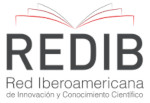Linguagem musical, fanfarra e currículo escolar: algumas considerações
DOI:
https://doi.org/10.48017/dj.v8i1.2469Keywords:
linguagem musical, fanfarra escolar, currículoAbstract
This study, which is a research essay, aims to investigate how the musical language developed by the fanfare can act in the production of knowledge and in the dissemination of sociocultural practices. The locus of the research is the Integrated Education Complex of Caetité, a full-time school, located in the city of Caetité-BA. There are considered the reasons that lead students to join the Fanfare of the Colégio Estadual Tereza Borges de Cerqueira [FANCTEB] and its pedagogical and sociocultural contributions to the participants. The methodology used is action-research, with a qualitative approach, in order to listen to the students and teachers of the school and people from the Community. The categories of analysis are: school, musical language, fanfare and school curriculum, having as theoretical support studies by authors such as: Bourdieu and Passeron (1992), Nadal (2011), Sacristán and Gómez (1998), Penna (2012), Lima (2011), Almendra Júnior (2014), Campos (2008), Veiga-Neto (2002), Parente (2020), Silva (2012), Freire (2010) and Brazilian educational legislation. So far, the reflections point to the construction of a School Fanfare Curricularization Project, as an Educational Product, as of a school flexibility plan, in one of the curriculum diversified part componentes: the Stations of Knowledge - Experiences and Practices.
Metrics
References
Almendra Júnior, W. P. (2014). A banda de música na formação do músico instrumentista profissional de São Luís/MA. [Monografia de Graduação, Universidade Federal do Maranhão]. http://musica.ufma.br/ens/tcc/25_almendrajunior.pdf.
Bahia, Governo do Estado. (2014). Portaria nº 249. file:///C:/Users/Zete/Downloads/doe_2014-01-22_pag_24%20(1).pdf. Almendra Júnior, W. P. (2014). A banda de música na formação do músico instrumentista profissional de São Luís/MA. [Monografia de Graduação, Universidade Federal do Maranhão]. http://musica.ufma.br/ens/tcc/25_almendrajunior.pdf.
Bahia, Governo do Estado. (2020). Portaria nº 81. file:///C:/Users/Zete/Downloads/doe_2020-02-07_pag_16%20(1).pdf.
Bahia, Governo do Estado. (2020). Documento Curricular Referencial da Bahia da Educação Integral. http://dcrb.educacao.ba.gov.br/dcrb-consulta-publica-educacao-integral/. http://dcrb.educacao.ba.gov.br/wp-content/uploads/2021/07/documentocurricularbahiaversaofinal.pdf.
Bahia, Governo do Estado. (2021). Lei Estadual nº 14.359. file:///C:/Users/Zete/Downloads/doe_2021-08-27_pag_1.pdf.
Bourdieu, P., & PASSERON, J-C. (1992). A reprodução. (3ª ed.). Francisco Alves
Brasil. (1998). Referencial Curricular Nacional para Educação Infantil. http://portal.mec.gov.br/seb/arquivos/pdf/rcnei_vol1.pdf. Acesso em: 09 mai. 2022.
Brasil. (2018). Base Nacional Comum Curricular: Ensino Médio. http://basenacionalcomum.mec.gov.br/abase/.
Brasil. (1996). Lei nº 9.394. http://www.planalto.gov.br/ccivil_03/leis/l9394.htm.
Brasil. (2008). Lei nº 11.769. http://www.planalto.gov.br/ccivil_03/_ato2007-2010/2008/lei/l11769.htm.
Brasil. (2016). Lei nº 13.278. https://www2.camara.leg.br/legin/fed/lei/2016/lei-13278-2-maio-2016-782978-publicacaooriginal-150222-pl.html.
Brasil. (2017a). Lei nº 13.415. http://www.planalto.gov.br/ccivil_03/_ato2015-2018/2017/lei/l13415.htm.
Brasil. (2016). Resolução nº 2. https://normativasconselhos.mec.gov.br/normativa/view/ CNE_RES_ CNECEBN22016.pdf?query=Educacao%20Infantil.
Brasil. (2016). Medida Provisória nº 746. https://educacao.mppr.mp.br/arquivos/File/informativos/2016/mp_746_2016_ ensino_medio_integral.pdf.
Campos, N. P. (2008). O aspecto pedagógico das bandas e fanfarras escolares: o aprendizado musical e outros aprendizados. Revista da Associação Brasileira de Educação Musical, v. 19. http://www.abemeducacaomusical.com.br/revistas/revistaabem/index.php/revistaabem/article/view/264.
Freire, V. B. (2010). Música e sociedade: uma perspectiva histórica e uma reflexão aplicada ao ensino superior de música. (2ª ed. rev. e ampl.). Associação Brasileira de Educação Musical.
Lima, R. I. (2011). Educação musical: a cultura da fanfarra e as contribuições da música para o desenvolvimento das potencialidades do educando. 2011, 77 p. [Trabalho de Conclusão de Curso, Centro Universitário Municipal de São José (USJ)]. https://usj.edu.br/wp-content/uploads/2015/08/TCC-ROSANA-ISABEL-LIMA.pdf.
Marinho, L. D. (2017). A viola caipira e a experiência musical em uma escola pública do campo – Emboabas/MG. [Dissertação de Mestrado, Universidade Federal de São João Del-Rei – UFSJ]. https://www.academia.edu/37603038/A_viola_caipira_e_a_experi%C3%AAncia_musical_em_uma_escola_p%C3%BAblica_do_campo_Emboabas_MG.
Nadal, B. G. (2011). A escola como instituição: primeiras aproximações. Olhar de Professor, v. 14, n. 1. https://revistas.uepg.br/index.php/olhardeprofessor/article/view/3437/2507.
Parente, C da M. D. P. (2020). Atividades extracurriculares e políticas de ampliação da jornada escolar: comparação entre Brasil e Espanha. Práxis Educacional, v. 16, n. 41. https://periodicos2.uesb.br/index.php/praxis/article/view/6638/90.
Penna, M. (2012). Música (s) e seu ensino. (2ª ed. rev. e. ampl.). Sulina.
Sacristán, J. G., &GÓMEZ, A. I. P. (1998). Compreender e transformar o ensino. Artes Médicas.
Silva, M. R. (2012) Perspectivas curriculares contemporâneas. Ibepex.
Veiga-Neto, A. (2002b). Cultura e currículo. Contrapontos. https://periodicos.univali.br/index.php/rc/article/view/133.
Downloads
Published
How to Cite
Issue
Section
License
Copyright (c) 2022 MARIZETE DE CARVALHO CARDOSO TEIXEIRA, Gabriela Silveira Rocha

This work is licensed under a Creative Commons Attribution 4.0 International License.
The Diversitas Journal expresses that the articles are the sole responsibility of the Authors, who are familiar with Brazilian and international legislation.
Articles are peer-reviewed and care should be taken to warn of the possible incidence of plagiarism. However, plagiarism is an indisputable action by the authors.
The violation of copyright is a crime, provided for in article 184 of the Brazilian Penal Code: “Art. 184 Violating copyright and related rights: Penalty - detention, from 3 (three) months to 1 (one) year, or fine. § 1 If the violation consists of total or partial reproduction, for the purpose of direct or indirect profit, by any means or process, of intellectual work, interpretation, performance or phonogram, without the express authorization of the author, the performer, the producer , as the case may be, or whoever represents them: Penalty - imprisonment, from 2 (two) to 4 (four) years, and a fine. ”


















